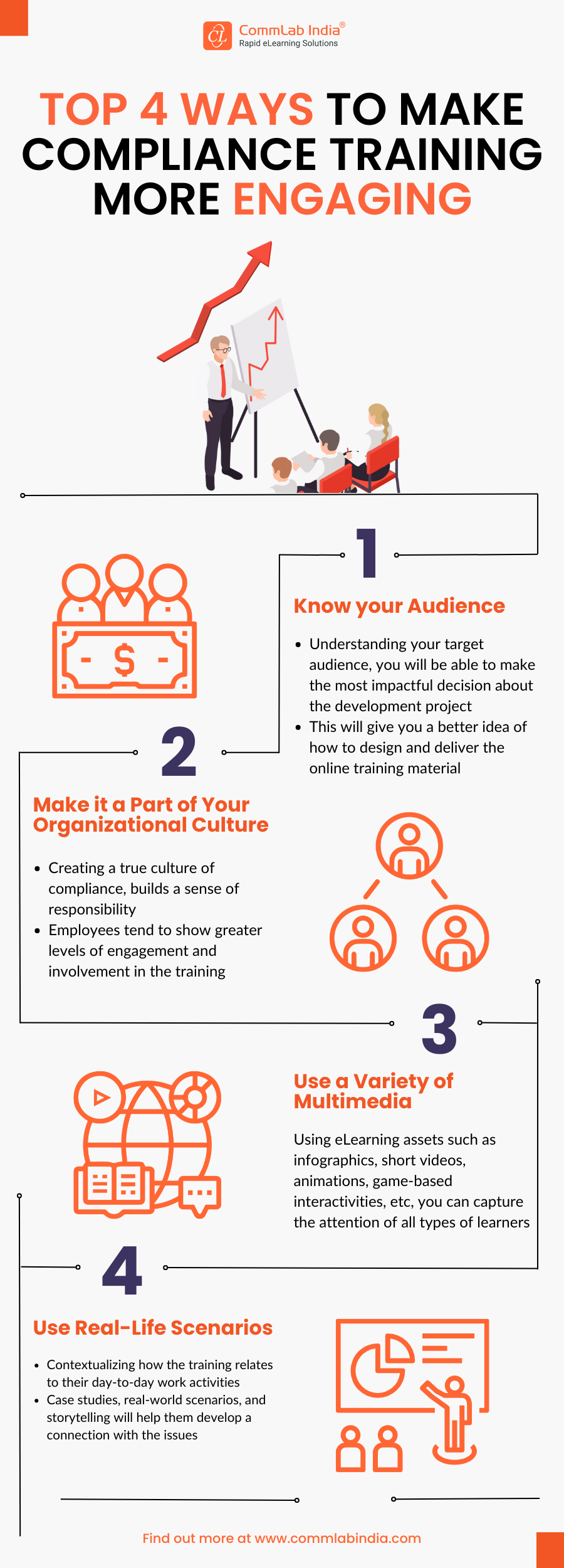Workplace Ethics and Compliance Training Made Easy with Technology

Every organization has to adhere to rules and regulations while conducting business. On the ground level, it means that your employees conduct themselves and go about their daily activities in a certain way. Workplace ethics and compliance training basically refers to the process of educating employees on the laws, regulations, and company policies that apply to your business domain and thus to their day-to-day job responsibilities. This training aims to avoid any violations of your industry norms thus maintain a high quality final output and work environment.
That’s why ethics and compliance training goes a long way in establishing a good reputation for your organization. But since these trainings deal with company regulations and policies, employees often find them dull and boring. If you opt for traditional methods of teaching, chances are the classroom session will be full of endless text-heavy rules along with apathetic employees.
Instead, go with a digital learning approach to keep the curiosity and interest of your employees alive for compliance and ethics issues. With digital learning, employees don’t have to sit through the training and can learn as per their convenience. Technology-enabled learning also applies lots of instructional design techniques to keep interest alive in the subject. Let’s explore how digital ethics and compliance courses keep the subject interesting and learners interested:
Keep It Real
For a subject like ethics and compliance that has real world ramifications, it is necessary that the training establish some kind of relativity for learners. Technology-based learning does this with scenarios or story-based learning. It constructs a relatable situation, complete with characters and names, that take learners through the entire subject matter. This helps employees visualize themselves in practical scenarios, allowing them to better gauge the impact of not adhering to compliance and ethical standards.
Keep It Interactive
The reason conventional learning falls short with ethic and compliance training is that it fails to involve employees in the learning process. E-learning on the other hand, can turn this around by various interactive learning methods. It embeds your compliance subject matter in games. Employees can play to grasp the rules and regulations while staying totally engrossed. E-learning can also make conventional content interactive by using gaming principles such as scores, leaderboards, and levels. These methods make employees part of the learning process, resulting in a better transfer of knowledge.
Keep It Fun
Ethics and compliance subject matter might be dull, but the way it is presented doesn’t have to be. Digital courses can spice things up in your ethics and compliance training using numerous visual elements. For e.g., you can use eye-catching images relevant to your subject matter, design your course in a way that content is easy on eyes, use relevant video clips or animations or infographics at strategic places to lighten the mood of a serious topic or much more according to your needs.
Keep It Short
As it often happens, it’s the duration and not the actual content, that makes employees stray from learning. With e-learning, you can avoid this using microlearning modules. These bite-sized courses take no more than a few minutes of your employees’ time. For e.g., the dos and don’ts pertaining to your workplace dress policy can become an attractive infographic or an animation. Micro courses are carefully developing after eliminating unnecessary content and retaining only the essential parts.
While the traditional methods of learning can become repetitive, digital learning can keep innovating with a wide array of learning elements. E-learning has the freedom to incorporate any permutation and combination of learning methodologies or elements that suit employees of different learning styles. Developers can analyze your needs and target audience to deliver a training best suited for you. Moreover, digital learning can also utilize classroom sessions in the form of blended learning. Why stick to traditional methods to convey your ethics and compliance parameters when you have such strong digital means at your service? Don’t wait any further, embrace technology and give your learners the high quality compliance training they deserve.
Editor’s note: This post was originally published in November 2017 and has been updated for comprehensiveness.






